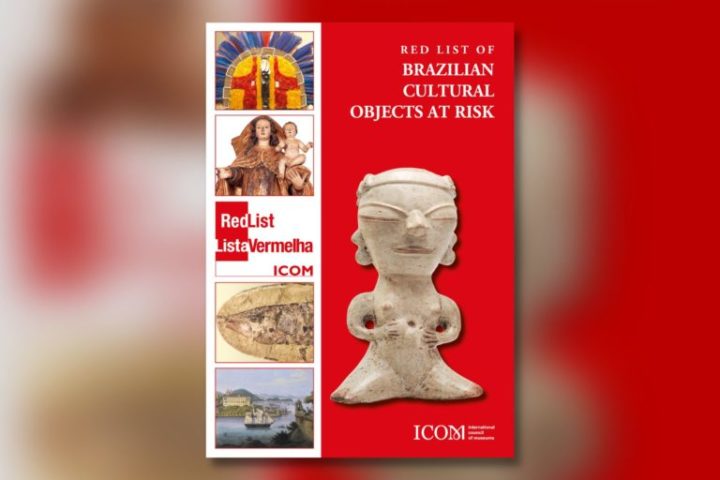Today, ICOM publishes its twentieth Red List: the ICOM Red List of Brazilian Cultural Objects at Risk.
Since its creation in 1946, ICOM has been deeply concerned about the illegal movement of cultural objects and has relied on its network of experts to develop tools and best practices to help museum professionals protect their heritage.
This latest Red List continues this work and takes into account the particular context of Brazil. Brazil is a megadiverse country, with a rich heritage that is representative its various cultural traditions and history. Despite strong laws protecting this heritage, both at national and international level, Brazilian heritage is at risk of theft and illegal export.
Like many countries, Brazil’s archaeological heritage is in danger of theft from museums and archaeological sites, as well as its religious institutions and their liturgical art and service artefacts, bibliographic materials, the items of Brazil’s indigenous communities, and fossils, culturally and scientifically important objects, which are highly coverted abroad by collectors and researchers.
“This new ICOM Red List for Brazil is another tool at the disposal of law enforcement and customs officials, which can help us to protect cultural heritage. The Interpol Brazil welcomes the inclusion of a section dedicated to paleontological materials and fossils, which recognises the looting and illicit trafficking of cultural goods specific to Brazil. This focus, in combination with existing tools, such as the INTERPOL’s ID-ART App and the Stolen Works of Art database will go a long way in protecting heritage in Brazil.”
Scynthia Schettino
Interpol Brazil
The purpose of this Red List for Brazilian Cultural Objects at Risk is to contribute to the protection of cultural heritage by identifying the type of objects that are most in danger of theft, looting and trafficking. The objects featured in this Red List have not been stolen, but are examples of the typologies of objects at risk. Museums, auction houses, art dealers and collectors are urged not to acquire objects similar to those presented in this Red List, without having carefully and thoroughly exercised due diligence, ascertained the provenance of the objects and examined all relevant legal documentation.
ICOM Red Lists are important not only because they raise awareness to illicit trafficking, but because they are also a precious tool for encouraging the application of due diligence procedures and provenance research, as stipulated in the ICOM Code of Ethics for Museums. ICOM looks forward to continuing our collaboration with our national committees in setting standards and disseminating resources, such as this new Red List – the first to include a section on fossils – which remind us that cultural objects at risk are diverse and that museums must always be diligent in their acquisitions.
Sophie Delepierre
Head of Heritage Protection Department
In cooperation with a dedicated team of Brazilian specialists, ICOM has published the Red List of Brazilian Cultural Objects at Risk thanks to the support of Itaú Cultural and Moreira Salles Institute.
ICOM RED LISTS
Since 2000, ICOM has published Red Lists that detail categories of endangered cultural goods from all over the world. Over the past two decades, Red Lists have become a leading instrument in the fight against illicit traffic in cultural goods, and are internationally recognised, used and appreciated as an awareness raising and educational reference tool. So far ICOM has published 20 Red Lists which cover 57 countries across four continents. ICOM distributes Red Lists to heritage professionals, universities, auction houses, military forces, but mainly to police and customs officers.
Download the Red List of Brazilian Culture Object At Risk (EN)
Download the Red List of Brazilian Culture Object At Risk (PT)
